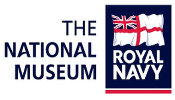Gordon
Smith, Battle Atlas of the Falklands War 1982 by Land, Sea, and Air,
Penarth: Naval–History.Net, 2006. 140
pp., maps, illustrations, appendix, bibliography, and
index.
Review
by Charles Steele
United States
Air Force Academy
_______________________________________________________________________
Battle
Atlas of the Falklands War 1982 by Land, Sea, and Air is
the title given to Gordon Smith’s 2006 revision of his
1989 work, Battles of the Falklands War. The
book’s new title denotes both a change in publishers,
the original title being offered by Ian Allen Ltd., and
one might suspect a desire to reflect Smith’s success in
compiling a remarkably functional reference tool. The
book does indeed provide maps detailing the sites of key
events in the war that lasted from the beginning of
April to mid-June1982. However, to consider this merely
an aid to understanding the geography associated with
the conflict is to sell this book well short of its full
usefulness. While there are the obligatory maps, Smith
has managed to provide what might best be termed a
concise encyclopedia of the
Falklands War that is constructed along chronological
lines.
Beginning
with a synopsis of the physical geography, economic
activities, and general demographics of the Falkland
Islands and Argentina
,
Smith proceeds to offer a brief description of the roots
of the conflict between Great Britain and Argentina .
His chronology dates back to the 16th century and the
first European sightings of the islands, then moves on
to the increased tensions emerging in the1960s that
eventually led to war in 1982. His remarks concerning
the quarrel are brief and matter of fact. The remainder
of the text follows in much the same manner—Smith
highlights the relevant events transpiring daily and
then provides slightly detailed thumbnail sketches to
acquaint his readers with the significance of those
events. In fact, the books greatest value is to be found
in its service as an annotated timeline of the crisis.
While
it has great merit as a detailed chronology, it should
be seen as neither a comprehensive history of the
conflict nor an expansive collection of cartographic
art. The book is not designed to provide analysis, and
the author even offers his suggestions for sources that
are better suited to provide answers to the how and why
questions of the war. If one looks to gain a better
appreciation for the Herculean task that confronted Rear
Admiral John “Sandy” Woodward and the other planners of
this remarkable case of expeditionary warfare, it will
come through self-directed interpretation of the details
contained in this book and not from an overarching
narrative provided by Smith. It should also be noted
that even though the book has the word atlas in its
title, it suffers from a paucity of large and detailed
maps. There are only 49 maps in the book and none of
them is as large as a full page. While the maps are
undoubtedly of great value, they would have been of much
greater benefit if they had been made friendlier to the
eye.
Despite
its minor defects, the book serves an important function
as a handy reference for students of this conflict.
Readers will find that there are numerous charts
detailing the composition of both British and
Argentinean forces, as well as pictures of many of the
key British participants and hardware from both sides.
While the comments concerning any of the matters
contained in this book are brief, they are well chosen
and of considerable utility. For example, Smith details
the importance of Ascension Island to securing Britain’s
victory and in so doing provides the reader with a short
history of the island and such important information as
its distance between Britain and the Falklands and the
fact that there was only one jetty at Clarence Bay to
assist in the servicing of British forces (p. 43).
Regardless of one’s familiarity with the Falklands War,
this book serves well as a day-to-day guide to the
conflict and as a quick reference to the actions
involving its best known participants.
The
Editors
International
Journal of Naval History
editors@ijnhonline.org
©
Copyright 2008, International Journal of Naval History,
All Rights Reserved
